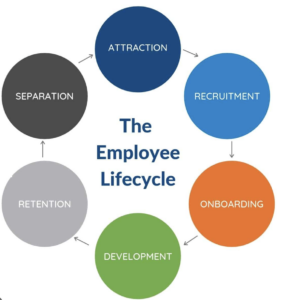In April 2020, it became a requirement for all employees to receive a ‘Written Statement of Employment Particulars’. This is a document which needs to be provided on or before their start date with their employer. In addition, employees who joined their employer before 6th April 2020 can ask for a Written Statement at any time. On receipt of a request, employers must provide it to the employee within one month of their request.
The legal requirement
With this change it became a requirement that the Written Statement included certain terms and conditions. It is no longer sufficient to rely on a basic offer letter confirming job title, salary and start date. The terms and conditions that must be included in a written statement are as follows:
- the employer’s name
- the employee or worker’s name
- the start date
- the date that ‘continuous employment’ started
- job title, or a brief description of the job
- the employer’s address
- the normal places or addresses of work
- pay, including how often and when
- working hours and days, or if it’s variable
- holiday entitlement, including an explanation of how its calculated if the employee or worker leaves the employer
- the amount of sick leave and pay applicable
- any other paid leave
- any contractual benefits
- any non-contractual benefits
- the notice period either side must give when employment ends
- how long a temporary job will last
- any probation period, including its conditions and how long it is
- if the employee will work abroad, and any terms that apply
- what training that must be completed by the employee or worker, including training the employer does not pay for
As an employer, you need to have all these terms detailed in Written Statements you issue to new joiners. You need to quickly define your current practices and policies. That way you will be ready for requests for a written statement from existing employees who started prior to 6th April 2020, as well as new hires.
In addition, the law allows for other terms to be provided at a later date, within 2 months of the employee starting. These other terms relate to pension arrangements, collective agreements, non-compulsory training (if provided), and disciplinary rules.
Benefits of providing a Written Statement
As well as the legal requirement to provide details of these specific terms of employment, there are benefits for both parties in having these points clearly written down. Both parties will know and understand what to expect from the other, and what their obligations are. This avoids ambiguity and inconsistency, which helps to prevent unnecessary problems or employment issues. Doing this may also prevent potential allegations of discrimination if employees are treated differently (whether inadvertently or not). Employees will feel secure in their relationship with their employer, which is more likely to develop trust and loyalty.
If you fail to provide the relevant documentation to your employees within the timelines specified by law, the potential penalty would be between two and four weeks’ pay.
Benefits of a Contract of Employment
The requirement under law is for a Written Statement of Employment Particulars, as detailed above, however many employers opt for a full contract of employment for their employees. This is because in a full employment contract you can include terms which protect the business interests, for example clauses around confidentiality, post-termination restrictions, intellectual property and conflict of interests. Having everything included in one comprehensive document also reduces administration time for the business, and provides clarity for the employee.
It’s important that employers are on the front foot when it comes to providing employees with details of their terms and conditions of employment as there are clear timelines to meet and clear advantages to providing this information.
If you would like to ensure that you’re protecting your business interests, and are meeting your legal requirements to provide employees with details of their terms of their employment, get in touch.


Recent Comments